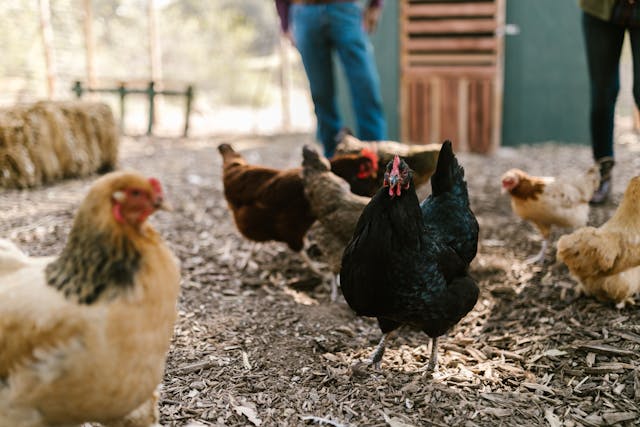
The data on outbreaks on farms, from the European Food Safety Authority EFSA and the European Centre for Disease Prevention and Control, are worrying
Europe is under the threat of a bird flu pandemic, according to data collected by the European Food Safety Authority (EFSA) and the European Centre for Disease Prevention and Control (ECDC). The avian influenza virus continues to spread in the European Union and elsewhere, causing high mortality among wild birds, with possible spillovers between wild and domestic mammals and outbreaks on farms, as highlighted by EFSA. This worrying situation was highlighted in a joint scientific report with ECDC, analysing risk factors and mitigation measures for a potential pandemic.
Experts identify some drivers of viral evolution, including farmed fur animals, such as mink and foxes, which may act as possible vehicles of spread. Wild mammals could also act as bridges between wild birds, pets and humans, while companion animals, such as cats, could transmit the virus if they live in outdoor environments. Farming in areas with high risk of contact with waterfowl, together with extreme weather events and climate change, can favour the introduction and spread of the virus on farms. These factors play a key role in the ecology and demography of wild birds, influencing the spread of disease over time. Although direct transmission from infected birds to humans is rare, there have been cases of exposure to the virus without symptomatic infections reported in the EU. However, avian flu viruses continue to evolve globally, with the risk that they could adapt to mammals, including humans, thus increasing the danger of a pandemic.
To mitigate this risk, it is crucial to adopt preventive and control measures. Veterinary and health authorities must work together through a One Health approach to limit the exposure of mammals, including humans, to avian viruses. Surveillance in animals and humans needs to be strengthened, along with genomic analysis and sharing of viral data. Biosecurity on farms must be strengthened to prevent the spread of the virus among animals. Promoting effective communication and improving veterinary infrastructure is also essential. Careful planning of breeding activities, especially in areas with high waterfowl densities, is essential to reduce the risk of transmission. Although one human case of avian flu has been reported in the United States, caused by contact with infected cattle, experts stress that direct transmission to humans remains rare and isolated. However, continued vigilance and preparation are crucial to address any developments and spread of the virus.
It will be crucial to take timely and coordinated measures to prevent a potential avian influenza pandemic. Cooperation across sectors and countries is essential to protect public and animal health from this global threat. The risk of an avian flu pandemic remains high as viruses continue to evolve and adapt. The mortality associated with certain strains, such as H5N1 and H7N9, highlights the importance of being prepared and vigilant. However, it is encouraging to note that due to the sensitivity and responsiveness of surveillance systems, isolated cases of transmission to humans have been detected. This demonstrates the effectiveness of preventive measures and international collaboration in monitoring and containing the risk.
Efforts must be intensified in continuous surveillance, preparedness and research to better understand the evolution of the virus. This includes genomic analysis and sharing of viral data to promptly identify any mutations or new strains. Effective and transparent communication with the public is essential to maintain trust and promote safe behaviour. It is important to educate the population on the precautions to take and how the virus is transmitted, as well as on the importance of vaccination when available. The threat of an avian virus pandemic requires a global and coordinated response. Only through collaboration between health, veterinary and government authorities at national and international levels, it’ll be possible to effectively mitigate the risk and protect public health.
Alessandro Fiorentino



 Subscribe
Subscribe